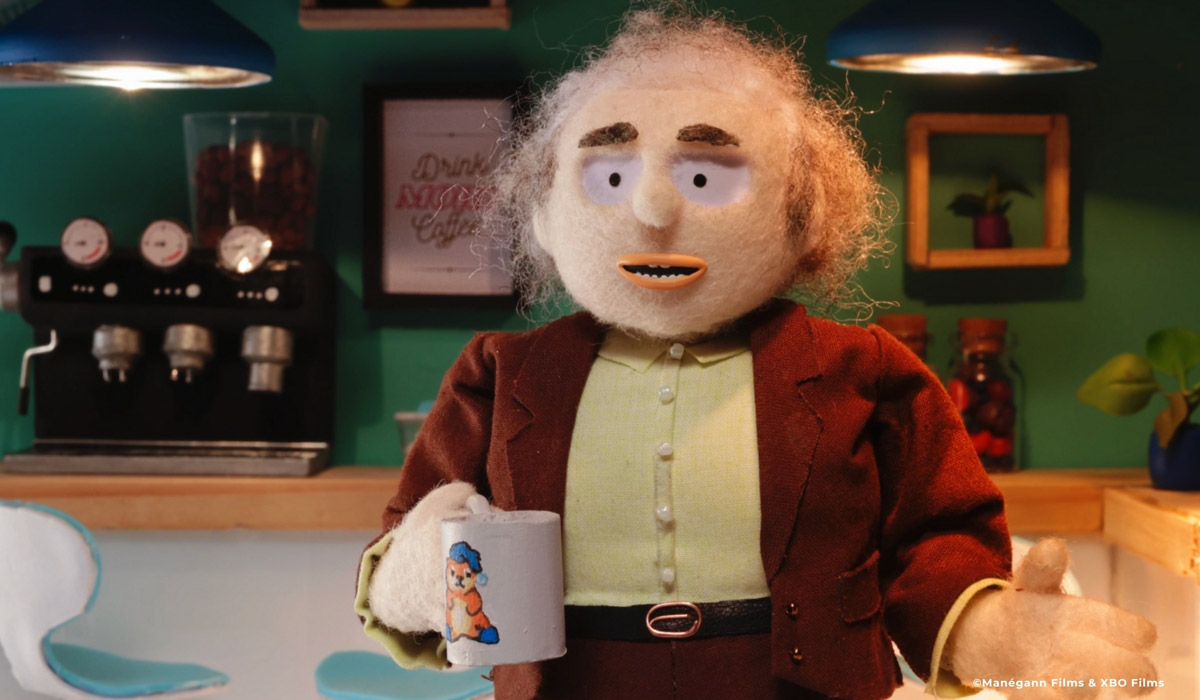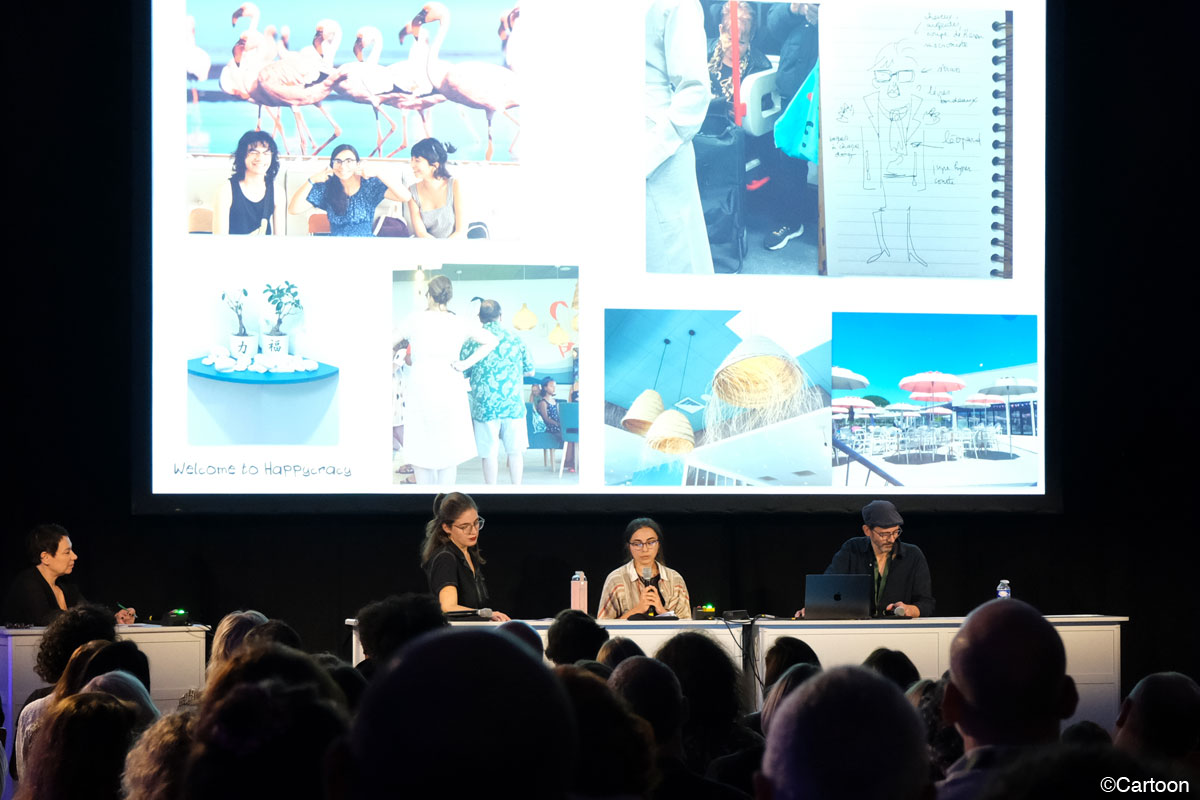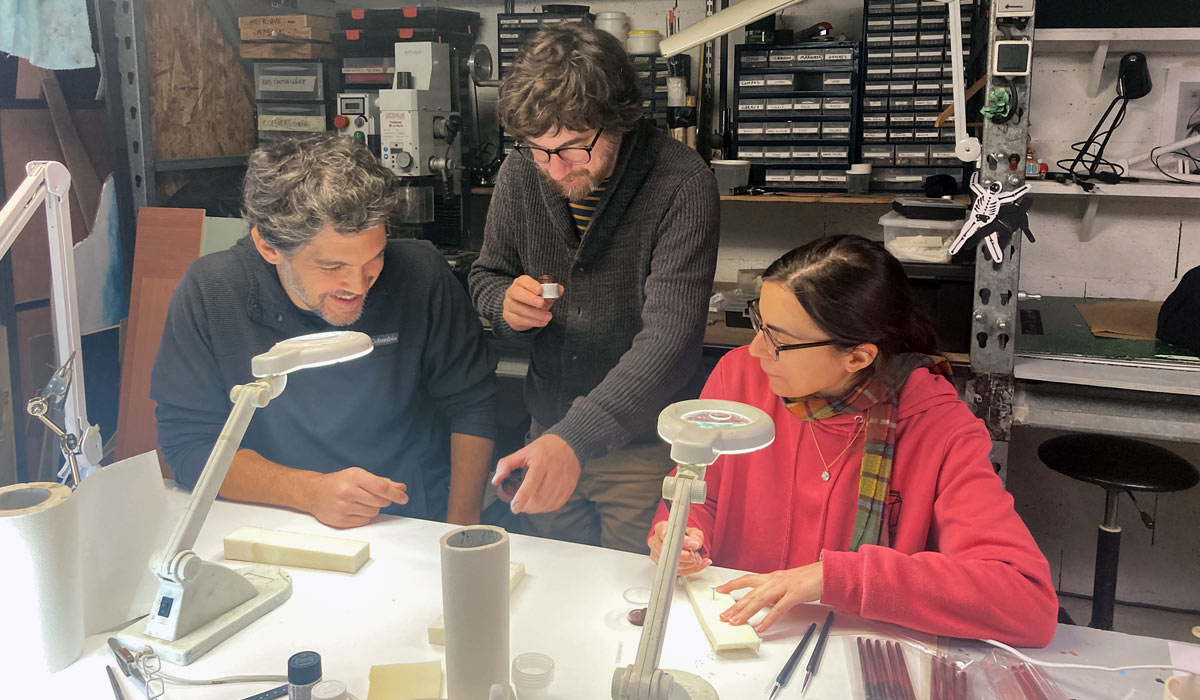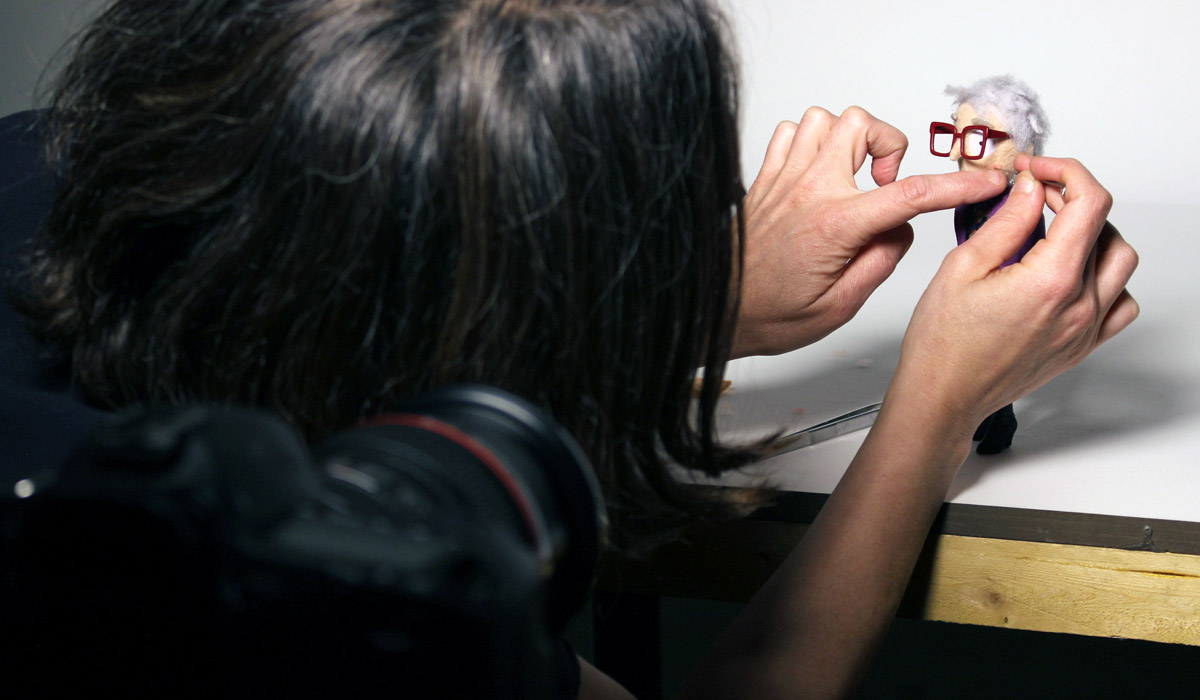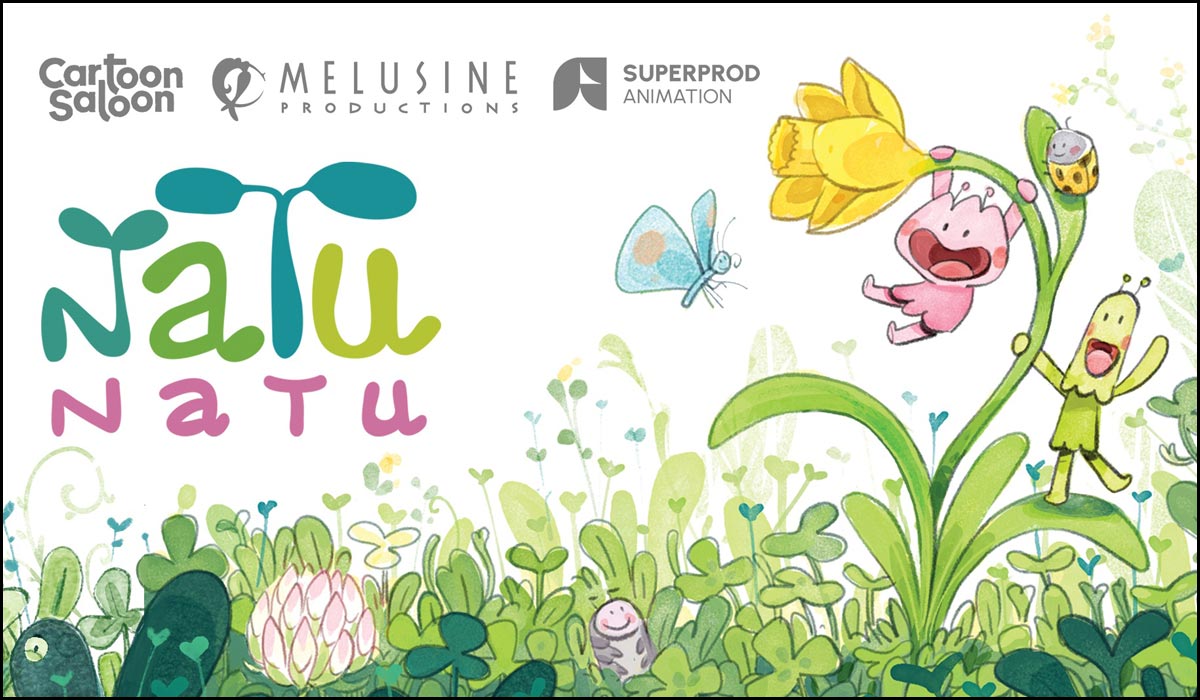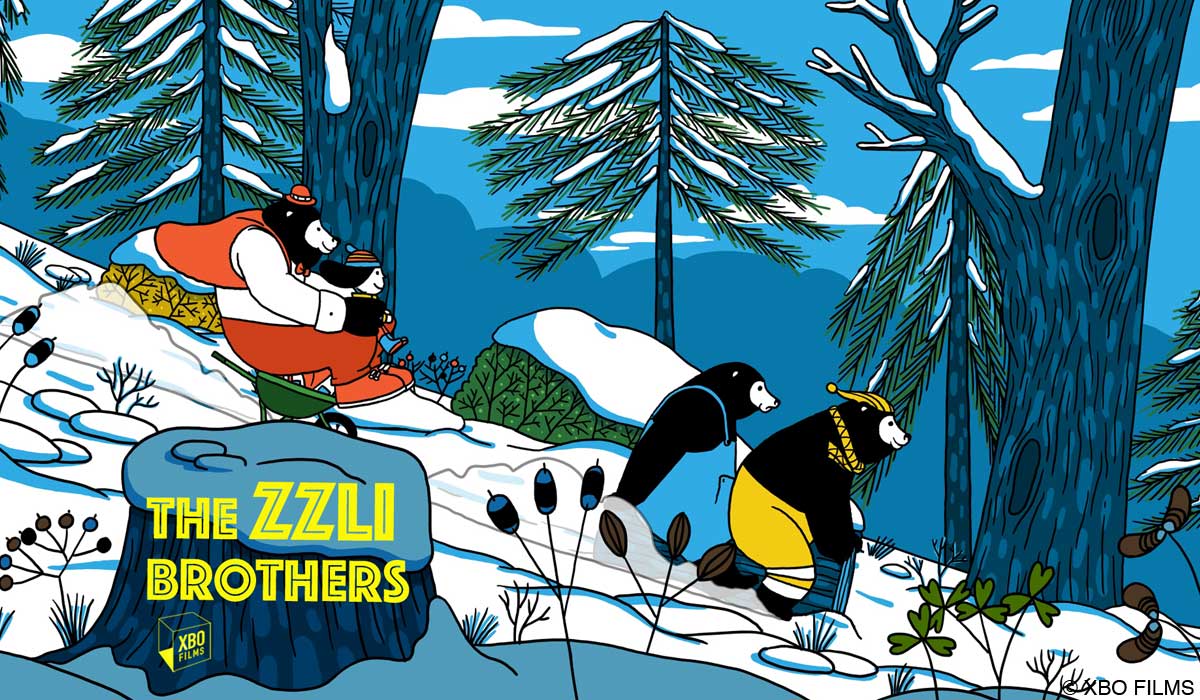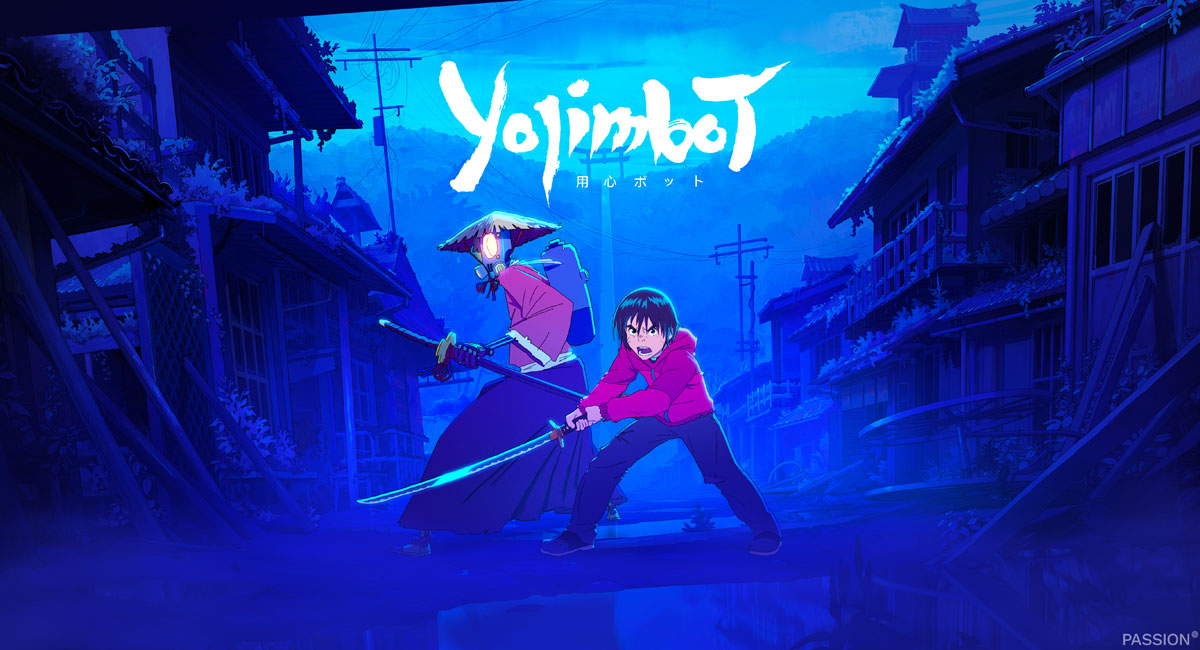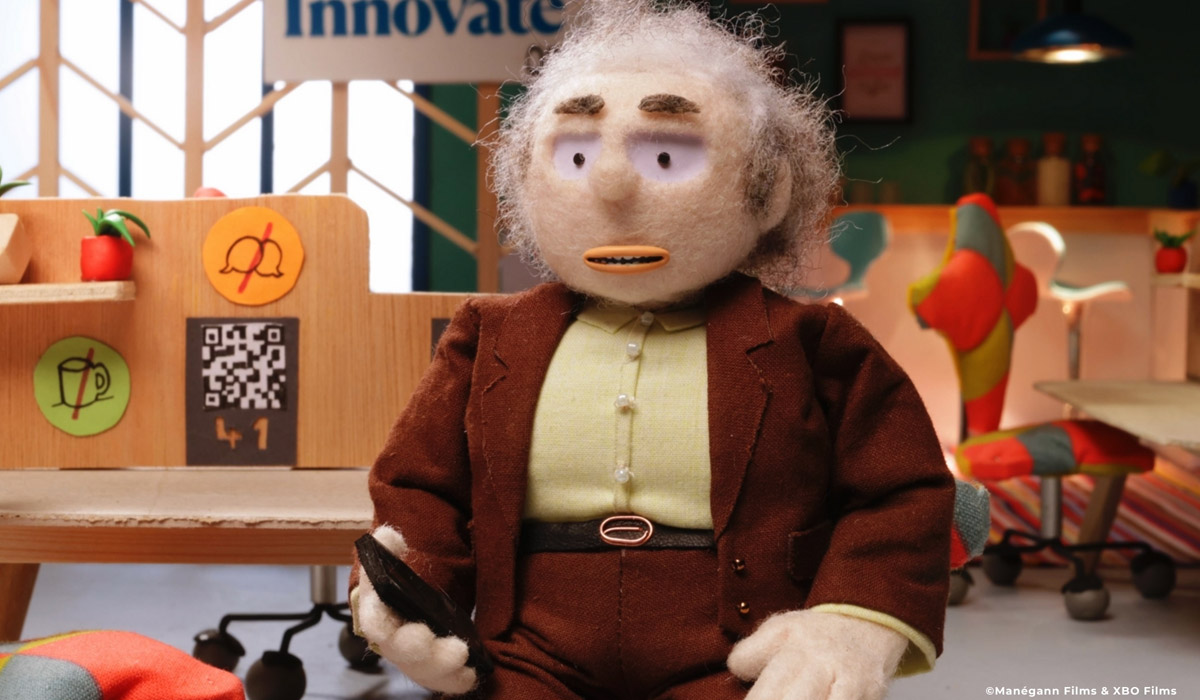
Synopsis
Welcome to Happycracy explores the many contradictions of humans in constant quest for happiness. Each 5-minute episode focuses on a different company whose promise is to make consumers happy. A microphone is handed out to customers and business managers: those who buy and those who sell wellness services. Everyone speaks out, until contradictions rise to the surface and the situation spirals out of control. The dialogues are extracts from our own documentary interviews. They will be embodied in stop-motion puppets. The puppets will express themselves in front of the camera, and will sometimes be put into situations.
Welcome to Happycracy
Director: Laurène Fernandez
Authors: Laurène Fernandez and Kim Fino
Main Producer: Agathe Chevrier (Manégann films, France)
Co-Producer: Luc Camilli (XBO films, France)
Format: 10 X 5’
Target audience: Young Adults / Adults
Techniques: Stop-motion
Welcome to Happycracy is an attractive stop-motion documentary animation series with a playful and warm feel. It is full of interesting and funny dialogue that deals with universally familiar topics we face in our daily lives in modern society.
At Cartoon Forum 2025, the series project attracted many participants in the event and was pitched in a hall filled to capacity, with many people standing.
We were able to hear insightful stories behind Welcome to Happycracy from Laurène Fernandez, its director and author.
Interview with Laurène Fernandez
Hideki Nagaishi (HN): What do you think are the key points of this animation series that would attract the potential audience?
Laurène Fernandez: This series is about everyday life. We analyze ordinary things that usually seem unremarkable, but here we take a slightly offbeat, broader perspective and look at the entire system.
It speaks to everyone, while still being slightly different from our daily lives, so it makes an impact and stimulates viewers, leaving them with food for thought.
In addition, it is visually compelling; one may not at first expect the critical dimension. It is amusing, and one recognizes things and people that one knows or might encounter every day, so it is appealing.
HN: What do you want to deliver to the target audience the most through this animation series and why?
Laurène Fernandez: Above all, I would like to use the staging to draw the viewer’s attention to the meaning and significance of the dialogues. All my staging choices are geared towards this: highlighting the dialogue to the point where every word is listened to carefully.
It’s essential to listen carefully to people in life in general, and to analyze, to have a critical mind. Especially when we’re interested in subjects that are seemingly positive, individual, and depoliticized, such as well-being or personal fulfillment.
Positivism, if we are not careful, is dangerous because it blinds us to systemic problems, even in language. We then become unable to realize that we disagree and to confront different points of view.
In order to build collective action, we must first be able to understand each other. I would like to invite the viewer to reflect on this.
HN: Where did the initial ideas of the project come from?
Laurène Fernandez: I wanted to explore further the mixed technique of stop-motion/documentary interview used in my short film Les humains sont cons quand ils s’empilent (English title: Humans are dumber when crammed up together) because this technique allows me to represent the way I see and listen to the world, and thus to place the viewer in my point of view.
I knew I was interested in language, in the current problem of the loss of meaning in language, the general intrusion into discourse of “newspeak” terms, of hollow but performative positive discourse, of obvious contradictions that we no longer notice…
I was also interested in the very current paradox of our Western societies, obsessed with happiness while claiming to be increasingly unhappy.
That’s when I discovered the book Manufacturing Happy Citizens. How the Science and Industry of Happiness Control our Lives by Eva Illouz and Edgar Cabanas, which allowed me to put concepts and words to my impressions and guide my thinking.
HN: What do you think is the strength or benefit of depicting documentary comedy for each episode with stop-motion? I would also like to hear the attractiveness and challenges of depicting a story with stop-motion for you in general.
Laurène Fernandez: For each project, I ask myself what form it should take to best express what I want to express. Which elements should be fictional? Documentaries? Is it better to use live action? Stop-motion? 3D animation? Traditional animation?
For this series, animation is the obvious choice: by using only the sound from the documentary interviews, it allows for anonymity, greater freedom in editing, and also an offbeat, humorous, and critical look at the comments.
Despite the number of characters and sets to build, stop-motion seemed obvious to me: the material, real nature of stop-motion goes hand in hand with the documentary, real nature of the sound.
Using puppets gives substance to the characters in a way that other techniques would not allow: like voodoo dolls of real people, who seem to speak for themselves. I wanted viewers to see this miniature, cobbled-together, wobbly world as a theatre of our society, which is also cobbled-together and wobbly.
Stop-motion allows for this aspect and also gives it a visually appealing, childlike character, which interests me both because the happiness industry seems harmless and friendly if you don’t look too closely, and I wanted to reproduce this effect, but also because this image allows me to maintain a playful tone, and thus make the criticism mischievous, or at worst irreverent, so as not to overwhelm either the characters or the audience with relentless and moralising judgment.
We are all in the same boat, and I invite you to reflect and laugh at this boat.
HN: What do you take care of the most and what kinds of creative challenges do you face when developing the story for each episode so far? How do you choose the companies you interview for the project?
Laurène Fernandez: When developing the series, I am particularly mindful of my point of view and my distance from the subject. This work begins as soon as I have someone in front of me during an interview: what is my relationship with them?
I try to be as sincere as possible, both with myself and with them, even if I disagree. I must never be judgmental, while maintaining a critical and almost sociological analysis of the person’s words, without ever forgetting that I have a human being in front of me with all their complexity and contradictions.
It’s a balancing act that continues throughout all stages of writing, right up to production and animation.
It is also necessary to seek this balance between all the characters in an episode: there are no good guys and bad guys, those who are right and those who are wrong. Everyone contributes to the whole, while making it a little more unstable.
When conceptualising the series, I decided which themes I wanted to address: vacations, athletic performance, love, sexuality… each time looking for a relatively recent good or service that is inseparable from our modernity: dating apps, sports coaches…
Choosing the companies involves a lot of research, finding interesting websites and people, and sending lots of emails. There is a casting process, but until I’ve done the interview and reviewed it, it’s impossible to know whether or not it will be used. I do a lot more interviews than appear in the series.
HN: I would like to ask about the visual design of the puppets and sets. What are you aiming to achieve with those designs? What challenges have you encountered in visual creation so far, and how have you dealt with them?
Laurène Fernandez: Visually, I’m looking for a DIY, bubbling, bursting look. To achieve this, I want the elements to be constructed as much as possible from recycled materials, not necessarily rebuilding everything on a smaller scale: for example, using beads to make buttons, a bottle cap for a stool…
This gives a playful and warm feel, and I think it’s important to never lose that perspective on the world. I would like the criticism of a dysfunctional and dehumanizing system to be overshadowed by human creativity and vitality: visually, this means paying attention to detail, working with real, tangible materials, using materials generously, and creating finishes that cannot be replicated identically…
It’s not easy to implement; we have to harmonise everyone’s practices, establish concrete rules for manufacturing, rethink our ways of doing things… it takes a lot of work to give the impression of letting go.


